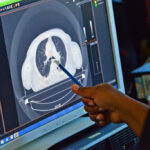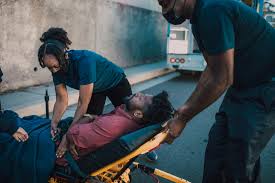
Myths and Facts About CT Scans and Radiation Exposure
October 5, 2025
How to Choose the Best Obstetrics Provider for Your Needs
October 6, 2025An emergency room is a specialized department within a hospital equipped to provide immediate medical care for acute illnesses and injuries. When a patient arrives with severe physical injuries, a dedicated trauma team initiates a structured response. This team is trained to work quickly and methodically to stabilize the patient. Here is some information on how emergency rooms handle trauma cases:
Rapid Assessment and Triage
Upon arrival at the emergency room, a trauma patient undergoes a rapid assessment and triage. A triage nurse quickly evaluates the severity of the injuries to determine the level of care needed. This prioritizes patients based on the nature of their trauma, such as injuries from a car accident, a fall, or a violent act. This system helps manage the flow of patients and allocates resources to those with the most immediate needs. Patients with life-threatening injuries are usually taken directly to a trauma bay for immediate intervention.
Primary and Secondary Surveys
In the trauma bay, the medical team performs a primary survey. This is a fast, systematic check for immediate life-threatening conditions, following the ABCDE approach: Airway, Breathing, Circulation, Disability (neurological status), and Exposure (checking the entire body for injury). Doctors and nurses secure the patient’s airway, support breathing, and control any major bleeding.
After the patient is stabilized, a secondary survey begins. This is a detailed, head-to-toe examination to identify all injuries. The medical team checks the patient’s head, face, chest, abdomen, pelvis, and limbs. A thorough evaluation helps create a comprehensive picture of the patient’s condition and guides the next steps in treatment.
Diagnostic and Treatment Interventions
Following the surveys, the team uses various diagnostic tools to get more information about the injuries. This may involve imaging tests, such as X-rays, CT scans, or ultrasounds, to assess internal damage. Blood tests are also performed to check organ function and blood counts.
Based on the diagnostic results, treatment interventions are started. These may include administering intravenous (IV) fluids, providing pain medication, or giving blood transfusions. Some patients need procedures like inserting a chest tube to help with breathing or applying splints to immobilize broken bones. The focus is on stabilizing the patient and preparing them for the next stage of care, which could involve surgery or hospital admission..
Specialized Care
Trauma cases often require the expertise of multiple medical specialists. A general surgeon typically leads the trauma team, but other experts are frequently called upon. A neurosurgeon might be needed for a head injury, or an orthopedic surgeon may be required for complex bone fractures. Anesthesiologists, radiologists, and respiratory therapists also play key roles. This collaborative approach enables patients to receive comprehensive care tailored to their specific injuries.
Find Your Nearest Emergency Room
Understanding the process of trauma care can help you feel better prepared in the event of a medical emergency. The structured approach used in an emergency room is designed to provide prompt and thorough attention to serious injuries. Knowing where to go for help is a practical step you can take for your peace of mind. If you or a loved one needs immediate medical attention, find your nearest emergency room to receive care.
- Soutaipasu: Exploring the Unique Japanese Subculture and Fusion Cuisine
- Wollmatten Guide: Benefits, Uses, Care Tips & Buying Advice for Natural Wool Mats
- Jadeitový kameň: Účinky, využitie, druhy a kompletný sprievodca
- Escapamento RD: Guia Completo, Modelos, Desempenho e Como Escolher o Melhor para Sua RD
- Sodiceram: Benefits, Uses, Installation & Complete Guide for Homeowners




